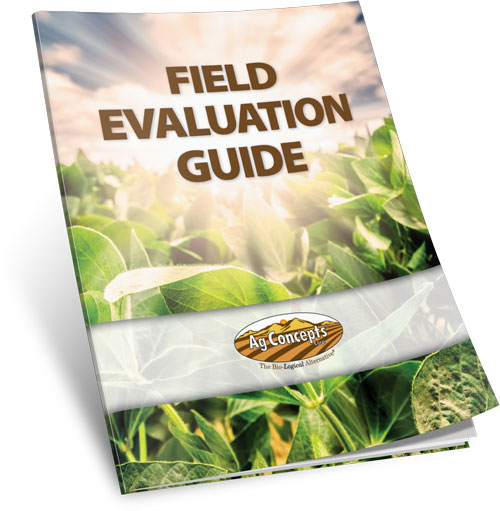
BIO-STIMULANTS
Bio-Stimulants – molecules that act upon and enhance certain metabolic or physiological processes within plants and soils.
There is life in the soil. Any good grower knows that the soil underneath a producing crop is teeming with life. Bacteria, fungus and earthworms all thrive just beneath the surface of the soil. Healthy soil leads to more healthy and abundant life in the soil. Inversely, life in the soil that is more healthy and abundant life leads to healthy soil. This is the basic idea behind bio-stimulants. If the health and abundance of life in the soil can be increased, the health of the soil is increased in turn.
Any good grower also knows that every successful crop depends on the soil foundation. Many ideas for good soil management are currently employed in the agriculture industry. Simple ideas such as crop rotation have lead to better soil. As outside pressures increase the grower it is more and more imperative that the soil is in the best condition possible.
There are many examples of biostimulants. Some can be as simple as elemental nutrients that are required for microbial life. Others, such as composts, require special care and equipment. Certain biostimulants are really bio-augmenters, which add a live culture to the soil. The need for biostimulants is recognized by more and more growers each year. With greater demand more options are developed with some options working better than others.
Ag Concepts Corp products utilize several different biostimulants. Examples of Ag Concepts biostimulants are enzymes, Humic Acids, Seaweed Extracts, micro-nutrients and other biologicals. Ag Concepts Corp has chosen these biostimulants through exhaustive research and planning. Ag Concepts Corp biostimulants are backed with years of university and private research. The following links provide more in depth information about the concepts behind Ag Concepts Corp biostimulants.
Why is Soil Bacteria Important?
Many of the concepts discussed above are the basis of soil biology. In a healthy soil ecosystem, the soil biota regulates the flow and storage of nutrients in many ways. Examples of important processes carried out by bacteria are: decompose plant and animal residue, fix atmospheric nitrogen, and transform nitrogen and other nutrients to various organic and inorganic forms. Soil microbiology also releases plant available forms of nutrients, mobilize phosphorus, and form mycorrhizal associations for nutrient exchange. In many instances even fertilizer applied to the soil passes through soil bacteria before crops can utilize it. Other soil bacteria help to bind soil particles together into stable aggregates that improve water infiltration and protect the soil from erosion, crusting, and compaction. Good soil structure is crucial for enhanced root development.
There are three functional groups of bacteria within the soil:
1. Decomposers: consume simple carbon compounds converting soil organic matter into forms useful to the rest of the organisms in the soil food web. A number of decomposers break down pesticides and pollutants in the soil. However, the most important service provided is immobilizing or retaining nutrients in their cells. By doing this, decomposers prevent the loss of nutrients, such as nitrogen, from the rooting zone.
2. Mutualistic bacteria: form symbiotic partnerships with plants. Well-known nitrogen-fixing bacteria are mutialistic bacteria.
3. Lithotrophs or chemoautotrophs: bacteria that obtain energy from compounds other than carbon sources. Members of these species are important in nitrogen cycling and degradation of pollutants as well. (See also Microorganisms.)
Bacteria from all these groups perform important services related to water dynamics, nutrient cycling, disease suppression, and are critical to healthy, thriving soils. Due to these actions and the fact that certain means of agricultural practices over the past few decades have diminished bacterial populations, it is important to regenerate these populations. Ag Concepts product Agzyme is an important tool in the regeneration and increase of soil microbiology
There is life in the soil. Any good grower knows that the soil underneath a producing crop is teeming with life. Bacteria, fungus and earthworms all thrive just beneath the surface of the soil. Healthy soil leads to more healthy and abundant life in the soil. Inversely, life in the soil that is more healthy and abundant life leads to healthy soil. This is the basic idea behind bio-stimulants. If the health and abundance of life in the soil can be increased, the health of the soil is increased in turn.
Any good grower also knows that every successful crop depends on the soil foundation. Many ideas for good soil management are currently employed in the agriculture industry. Simple ideas such as crop rotation have lead to better soil. As outside pressures increase the grower it is more and more imperative that the soil is in the best condition possible.
There are many examples of biostimulants. Some can be as simple as elemental nutrients that are required for microbial life. Others, such as composts, require special care and equipment. Certain biostimulants are really bio-augmenters, which add a live culture to the soil. The need for biostimulants is recognized by more and more growers each year. With greater demand more options are developed with some options working better than others.
Ag Concepts Corp products utilize several different biostimulants. Examples of Ag Concepts biostimulants are enzymes, Humic Acids, Seaweed Extracts, micro-nutrients and other biologicals. Ag Concepts Corp has chosen these biostimulants through exhaustive research and planning. Ag Concepts Corp biostimulants are backed with years of university and private research. The following links provide more in depth information about the concepts behind Ag Concepts Corp biostimulants.
Why is Soil Bacteria Important?
Many of the concepts discussed above are the basis of soil biology. In a healthy soil ecosystem, the soil biota regulates the flow and storage of nutrients in many ways. Examples of important processes carried out by bacteria are: decompose plant and animal residue, fix atmospheric nitrogen, and transform nitrogen and other nutrients to various organic and inorganic forms. Soil microbiology also releases plant available forms of nutrients, mobilize phosphorus, and form mycorrhizal associations for nutrient exchange. In many instances even fertilizer applied to the soil passes through soil bacteria before crops can utilize it. Other soil bacteria help to bind soil particles together into stable aggregates that improve water infiltration and protect the soil from erosion, crusting, and compaction. Good soil structure is crucial for enhanced root development.
There are three functional groups of bacteria within the soil:
1. Decomposers: consume simple carbon compounds converting soil organic matter into forms useful to the rest of the organisms in the soil food web. A number of decomposers break down pesticides and pollutants in the soil. However, the most important service provided is immobilizing or retaining nutrients in their cells. By doing this, decomposers prevent the loss of nutrients, such as nitrogen, from the rooting zone.
2. Mutualistic bacteria: form symbiotic partnerships with plants. Well-known nitrogen-fixing bacteria are mutialistic bacteria.
3. Lithotrophs or chemoautotrophs: bacteria that obtain energy from compounds other than carbon sources. Members of these species are important in nitrogen cycling and degradation of pollutants as well. (See also Microorganisms.)
Bacteria from all these groups perform important services related to water dynamics, nutrient cycling, disease suppression, and are critical to healthy, thriving soils. Due to these actions and the fact that certain means of agricultural practices over the past few decades have diminished bacterial populations, it is important to regenerate these populations. Ag Concepts product Agzyme is an important tool in the regeneration and increase of soil microbiology
How to Evaluate Your Field

Corporate Office:
439 East Shore Drive., Suite 200
Eagle, ID 83616
(208) 388-1131
439 East Shore Drive., Suite 200
Eagle, ID 83616
(208) 388-1131
Manufacturing Plant:
17285 US Highway 30
Bliss, ID 83314
17285 US Highway 30
Bliss, ID 83314
